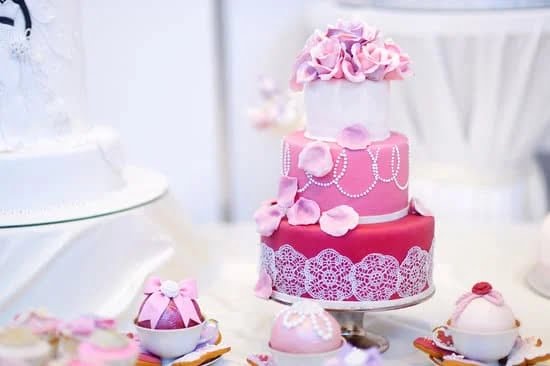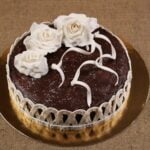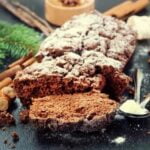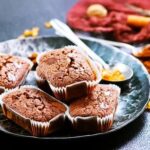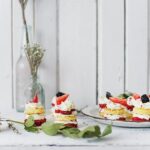Cake decorating icing is a crucial element in the creation of visually appealing cakes. With the right icing, a simple cake can be transformed into a stunning work of art. In this article, we will explore the importance of simple cake decorating icing and how it can elevate your cake designs.
When it comes to cake decoration, icing acts as both a canvas and a medium for creativity. It provides not only a smooth and flawless base for other decorations but also adds flavor and texture to the overall taste experience. From creating intricate patterns and beautiful borders to adding vibrant colors, the right icing can make all the difference in turning an ordinary cake into something truly extraordinary.
The choice of icing is vital as it determines not only the appearance but also the taste and feel of your finished creation. Different types of icing, such as buttercream, royal icing, and fondant, each possess unique characteristics that lend themselves to different design styles and techniques. By understanding the basics of these various options, you can select the perfect icing for your desired effect.
In this article, we will delve into everything you need to know about simple cake decorating icing. We will explore different types of icings commonly used in cake decoration, discuss their strengths and weaknesses, provide tips on selecting the right icing for your needs, teach you essential piping techniques, share recipes for homemade icings, troubleshoot common issues faced by decorators, and showcase inspiring design examples. So let’s dive in and unleash our creativity with simple cake decorating icing.
Understanding the Basics
Cake decorating icing is a crucial element in creating visually appealing cakes, as it has the power to elevate a simple cake into a work of art. Understanding the basics and types of simple cake decorating icing is essential for any aspiring cake decorator. There are several types of icing commonly used for cake decoration, each with its own unique characteristics, strengths, and weaknesses.
One popular type of cake decorating icing is buttercream. Buttercream icing is made from butter or shortening mixed with powdered sugar and flavoring. It has a smooth texture and is easy to work with, making it perfect for piping borders and creating intricate designs. However, buttercream can be sensitive to temperature changes and may not hold up well in warmer environments.
Another common type of icing used for cake decoration is royal icing. Royal icing is made from egg whites or meringue powder mixed with powdered sugar. It dries quickly and hardens to create a firm surface, making it ideal for creating intricate decorations such as flowers and filigree designs. However, royal icing can be more challenging to work with compared to buttercream due to its quick-drying nature.
Fondant is another popular choice for cake decorating icing. Made from a mixture of sugar, water, gelatin, and flavoring, fondant has a smooth and pliable consistency that allows decorators to cover cakes seamlessly. Fondant can also be molded into various shapes and designs, making it versatile for creating 3D decorations. However, some people might find the taste of fondant too sweet or chemical-like.
Understanding the different types of simple cake decorating icing is crucial in choosing the right one for your desired design and occasion. Consider factors like the intricacy of your design, temperature conditions during serving time, as well as personal preference when selecting an icing type. Each type has its own unique set of qualities that can enhance your cakes’ visual appeal and bring your creative visions to life.
- Buttercream: A smooth and easy-to-work-with icing perfect for piping borders.
- Royal icing: Dries quickly, creating a firm surface ideal for intricate decorations.
- Fondant: Versatile and moldable icing that can cover cakes seamlessly and create 3D designs.
Choosing the Perfect Simple Cake Decorating Icing
When it comes to cake decorating, choosing the right icing is key to creating a visually stunning masterpiece. The right icing can take a simple cake from ordinary to extraordinary, elevating its appearance and adding that wow factor. However, with so many different types of icing available, it can be overwhelming to know which one to choose. Consider these factors when selecting the perfect simple cake decorating icing.
One important factor to consider when choosing your icing is the occasion. Are you decorating a birthday cake or a wedding cake? The type of event will often dictate the style of decoration and therefore the type of icing needed.
For more casual occasions, buttercream icing might be perfect, as it allows for smooth finishes and easy decorations. On the other hand, royal icing is commonly used for more formal events due to its ability to create intricate designs and sturdy decorations that hold their shape.
Design complexity is another crucial factor in selecting your icing. If you are planning on creating elaborate patterns and intricate details, then fondant may be your best option. Fondant provides a clean canvas for detailed decorations and allows for a smooth finish on your cake’s surface. It also works well for themed cakes or sculpted designs. However, if you prefer a lighter and less sweet option, buttercream or whipped cream frosting could be better suited for simpler designs.
While considering the occasion and design complexity is essential when choosing your icing, don’t forget about taste and texture. Take into account both your personal preference and the flavor profile of your cake when deciding on an icing flavor.
Buttercream is popular due to its creamy texture and versatility in flavor options like vanilla or chocolate. On the other hand, royal icing has a light and sweet taste that pairs well with rich flavored cakes like red velvet or lemon.
Mastering Simple Cake Decorating Techniques
One of the key skills in cake decorating is mastering piping techniques and creating decorative icing designs. With the right tools and a little practice, anyone can achieve impressive results. Whether you’re a beginner or looking to take your cake decorating to the next level, this section will provide you with the essential knowledge and techniques to create beautiful designs on your cakes.
Basic Piping Techniques for Beginners
If you’re new to cake decorating, it’s important to start with basic piping techniques. This includes creating borders, rosettes, and lettering. To create borders, use a round tip and gently squeeze your icing in a continuous line around the edges of your cake.
For rosettes, use a star tip and pipe small swirls onto your cake surface. Lettering can be achieved by using a small round tip or writing icing pen to pipe alphabet letters or personalized messages on top of your cake.
Intermediate and Advanced Decorative Techniques
Once you have mastered the basics, it’s time to move on to more advanced decorative icing techniques. This involves exploring various icing tips and tools to create intricate designs on your cakes.
Some popular tips include the petal tip for creating realistic flower petals, the leaf tip for adding foliage details, and the basketweave tip for achieving a textured basket-like pattern. By experimenting with different tips and practicing different techniques like pressure control and angle manipulation, you’ll be able to create stunning designs that will surely impress.
To enhance your decorative icing designs even further, consider incorporating other elements such as sugar flowers or edible pearls. These additional decorations can elevate your cake design from great to extraordinary.
Adding Flavor and Color
When it comes to cake decorating, flavor and color are just as important as visual appeal. Enhancing simple cake decorating icing with delicious flavors and vibrant colors can take your creations to the next level. In this section, we will share some tips and techniques on how to incorporate flavors and achieve vibrant colors while maintaining the consistency of your icing.
To add flavor to your icing, you can start by incorporating extracts or essences. Vanilla extract is a classic choice that enhances the overall taste of the icing without overpowering it. For chocolate lovers, cocoa powder can be added to buttercream icing for a rich and indulgent flavor. Additionally, fruit purees or concentrates can be mixed into the icing to create unique fruity flavors.
| Flavor | Recommended Ingredients |
|---|---|
| Vanilla | Vanilla extract |
| Chocolate | Cocoa powder |
| Fruit | Fruit puree or concentrate |
When it comes to coloring your icing, there are various options available. Natural food dyes derived from fruits, vegetables, and spices are an excellent choice for those seeking vibrant colors without artificial additives. These natural dyes come in liquid or powder form and can be easily mixed into your icing until the desired color is achieved.
For more intense and concentrated colors, gel-based food coloring is another popular choice among cake decorators. Gel-based coloring is highly pigmented and does not change the consistency of the icing like liquid food coloring may sometimes do. Start by adding a small amount of gel color and gradually increase until you reach the desired shade.
| Color | Recommended Coloring |
|---|---|
| Vibrant Colors | Gel-based food coloring |
| Natural Colors | Natural food dyes |
Incorporating flavor and color into your simple cake decorating icing not only enhances the taste but also adds visual appeal to your cakes. Experiment with different flavors and colors to create unique combinations that cater to your personal preferences and designs. Remember to always start with small amounts and adjust as needed, ensuring that the icing consistency remains suitable for piping and decorating.
Troubleshooting Common Issues
Addressing Icing Consistency Issues
One common challenge that cake decorators face is achieving the right consistency with their icing. The consistency of the icing depends on the intended purpose. For intricate designs and piping, a firmer consistency is needed, while a softer consistency works best for spreading and filling.
To troubleshoot icing consistency issues, it’s important to understand the different variables that can affect it. Factors such as temperature, humidity, and ingredient proportions can all play a role. If your icing is too stiff, you can gradually add small amounts of liquid, such as milk or water, to thin it out. On the other hand, if your icing is too runny, you can add more powdered sugar gradually until you achieve the desired thickness.
Dealing with Air Bubbles
Another frequent issue encountered when working with cake decorating icing is air bubbles. These bubbles can ruin the smooth appearance of your cake’s surface or create unwanted holes in your design.
To prevent air bubbles from forming, start by properly mixing your icing. Avoid overmixing as this can introduce excess air into the mixture. Once you’ve iced your cake or piped a design, gently tap it on a flat surface to help release any trapped air bubbles.
If air bubbles do form during the application process, use a toothpick or small needle to gently pop them. Work carefully to avoid damaging your design or creating visible marks on the cake.
Eliminating Unwanted Streaks
Streaks in cake decorating icing can make your final product look unprofessional and messy. This issue often occurs when mixing liquid ingredients with powdered sugar or when adding food coloring.
To avoid streaks in your icing, make sure to sift your powdered sugar before adding it to other ingredients. This helps break up any clumps and ensures even distribution throughout the mixture.
When incorporating liquid ingredients, gradually add them to your icing mixture while blending continuously. This will help achieve a smooth consistency and prevent streaks from forming.
If streaks appear after adding food coloring, try using gel-based colors instead of liquid ones. Gel-based colors are more concentrated and have a thicker consistency, making them less likely to cause streaking. Start by adding a small amount of gel coloring and gradually increase it until you achieve the desired hue.
By addressing these common issues and implementing the troubleshooting techniques mentioned above, cake decorators can overcome challenges related to icing consistency, air bubbles, and streaks. With practice and patience, anyone can perfect their simple cake decorating icing techniques and create stunning cakes that taste as good as they look.
Top 5 Simple Cake Decorating Icing Recipes
Buttercream Frosting Recipe
One of the most popular and versatile cake decorating icing recipes is buttercream frosting. Made with a combination of butter, powdered sugar, and flavorings, this creamy and smooth icing is perfect for both beginners and experienced decorators.
To make buttercream frosting, start by beating unsalted butter until light and fluffy. Gradually add powdered sugar while continuing to beat until well combined. Add vanilla extract or any other desired flavorings, such as almond or lemon juice, to enhance the taste. Adjust the consistency by adding milk or heavy cream a tablespoon at a time until the desired thickness is achieved.
Royal Icing Recipe
Royal icing is known for its firm texture and ability to harden quickly when exposed to air. This makes it ideal for intricate cake decorations like piping flowers, borders, and lace patterns. The key ingredients in royal icing are egg whites or meringue powder, powdered sugar, and lemon juice or water.
To make royal icing, whisk together egg whites (or meringue powder) and lemon juice (or water) until foamy. Gradually add powdered sugar while whisking constantly until all the sugar is incorporated and the mixture turns stiff peaks. Adjust the consistency by adding more liquid if needed.
Fondant Recipe
Fondant is a smooth dough-like icing that can be rolled out and draped over cakes for a flawless finish. It provides a sleek canvas for elaborate decorations like sculpted figures or fondant ribbons. Fondant can be store-bought or homemade using ingredients like gelatin, corn syrup, shortening, confectioners’ sugar, and flavorings.
To make marshmallow fondant from scratch at home, melt marshmallows with water in the microwave or stovetop until smooth. Gradually mix in confectioners’ sugar until a sticky dough forms. Transfer the mixture onto a work surface dusted with powdered sugar and knead until smooth and pliable.
These top 5 simple cake decorating icing recipes are just the beginning of your creative journey. Experiment with flavors, colors, and techniques to add your personal touch to any cake design. With a bit of practice and imagination, you’ll be able to create stunning cakes that taste as good as they look.
Showcasing Simple Cake Decorating Icing
The art of cake decorating is truly brought to life through the use of simple cake decorating icing. This section will showcase inspiring ideas and design examples that highlight the endless possibilities when it comes to creating visually stunning cakes.
One popular technique in cake decorating is piping, which allows decorators to create intricate designs with ease. Using buttercream icing, decorators can pipe beautiful borders, delicate rosettes, and even personalized lettering on their cakes. For those looking to take their piping skills to the next level, advanced techniques such as scrollwork, flowers, and lace can be achieved by using various icing tips and tools.
Another type of icing that offers a smooth and polished finish is fondant. Fondant allows decorators to create flawless surfaces on cakes and provides a blank canvas for intricate designs. From sculpted figures and realistic flowers to elegant ruffles and bows, fondant opens up a world of creative possibilities in cake decorating.
To add vibrant colors and flavors to your cakes, gel-based coloring agents and natural food dyes can be incorporated into your icing. Achieving bright and bold hues has never been easier, allowing decorators to create eye-catching designs that are sure to impress. Similarly, incorporating flavors like vanilla, chocolate, or fruit into your icing can elevate the taste experience of your cake while still maintaining consistency.
Embarking on a journey of cake decorating opens up a realm of creativity where the only limit is one’s imagination. By experimenting with different icing techniques and design styles, decorators have the opportunity to create show-stopping masterpieces that are not only visually appealing but also allow them to showcase their unique artistic flair.
| Icing Technique | Design Examples |
|---|---|
| Piping: Borders |  |
| Piping: Rosettes |  |
| Fondant: Sculpted Figures |  |
| Fondant: Ruffles and Bows |  |
Conclusion
In conclusion, simple cake decorating icing is a crucial element in creating visually appealing cakes and transforming them into works of art. Throughout this article, we have explored the different types of icing commonly used for cake decoration, discussed key characteristics, and provided a comprehensive guide on selecting the perfect icing based on various factors. We have also covered essential piping techniques and decorative designs, as well as tips on adding flavor and color to the icing.
Now armed with knowledge and inspiration from this article, it is time for you to unleash your creativity with simple cake decorating icing. Remember to choose the right icing that suits the occasion, design complexity, flavor preferences, and desired texture. Master the essential piping techniques and experiment with different decorative designs using various icing tips and tools. Don’t be afraid to add flavor or vibrant colors to your icing using natural food dyes or gel-based coloring.
As you embark on your cake decorating journey, embrace your creativity and let it flow freely. The possibilities are endless when it comes to cake decorating, so don’t hesitate to try new ideas and explore unique designs. Whether it’s a special occasion or just a way to express your artistic side, simple cake decorating icing provides you with the opportunity to create beautiful and delicious masterpieces that will impress your loved ones and leave a lasting impression.
So go ahead, gather your supplies, practice your techniques, and let your imagination run wild. Unleash your creativity with simple cake decorating icing today.
Frequently Asked Questions
What is the simplest type of icing?
The simplest type of icing is powdered sugar icing, also known as glaze or drizzle icing. It only requires two main ingredients: powdered sugar and liquid, such as water or milk. To make it, you simply mix the powdered sugar with your chosen liquid until you achieve a smooth and pourable consistency.
This type of icing is perfect for adding a touch of sweetness and a glossy finish to baked goods like cinnamon buns or cookies. While it may not have the same richness or complexity as other types of icing, its simplicity makes it quick and easy to prepare.
What is the best icing to use for cake decorating?
When it comes to cake decorating, buttercream icing is often considered the best choice. Buttercream icing is made from butter, powdered sugar, and flavorings like vanilla extract, which are beaten together until creamy and smooth. It has a light and fluffy texture that allows for easy spreading and piping onto cakes.
Its versatility makes it suitable for various cake decorating techniques, from basic borders to intricate designs. Additionally, buttercream can be easily colored using gel food coloring, making it ideal for creating beautifully decorated cakes in vibrant hues.
Which frosting is best for beginners?
For beginners in frosting cakes, whipped cream frosting is a great option. Whipped cream frosting is made by beating heavy whipping cream with powdered sugar until thick and fluffy. Its light and airy texture makes it easy to work with while still giving your cake an elegant appearance.
This type of frosting requires minimal effort but yields impressive results, especially when combined with fresh fruits or used as a filling between cake layers. However, since whipped cream frosting contains dairy products, it’s important to keep the frosted cake refrigerated until serving time to maintain its stability and freshness

Welcome to our cake decorating blog! My name is Destiny Flores, and I am the proud owner of a cake decorating business named Cake Karma. Our mission is to provide delicious, beautiful cakes for all occasions. We specialize in creating custom cakes that are tailored specifically to each customer’s individual needs and tastes.

